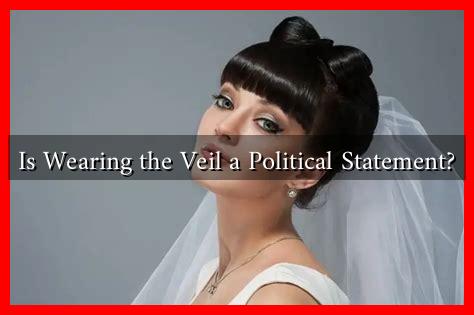-
Table of Contents
Is Wearing the Veil a Political Statement?
The veil, often associated with Muslim women, has become a focal point of debate in various societies around the world. While some view it as a symbol of oppression, others see it as an expression of identity and autonomy. This article explores the complex relationship between the veil and political statements, examining its implications in different cultural contexts.
The Veil: A Symbol of Identity
For many women, wearing the veil is a deeply personal choice that reflects their cultural and religious identity. The veil can serve as a means of expressing faith, modesty, and belonging to a community. In this context, it is essential to recognize that the decision to wear a veil is not universally imposed but can be a voluntary act of empowerment.
- Religious Significance: In Islam, the veil (hijab) is often seen as a commandment from God, promoting modesty and piety.
- Cultural Identity: For many women, the veil is a way to connect with their heritage and cultural roots.
- Personal Empowerment: Some women choose to wear the veil as a form of self-expression and autonomy over their bodies.
The Political Dimension of the Veil
While the veil can be a personal choice, it also carries significant political implications. In various countries, the act of wearing or not wearing a veil can be interpreted as a political statement, reflecting broader societal attitudes towards gender, religion, and cultural identity.
Case Studies: The Veil in Different Contexts
Several countries have enacted laws or policies regarding the wearing of the veil, often framing these decisions within political narratives. Here are a few notable examples:
- France: In 2004, France implemented a law banning the wearing of conspicuous religious symbols in public schools, which included the hijab. This law was justified as a means to promote secularism but sparked widespread debate about religious freedom and women’s rights.
- Turkey: Historically, Turkey has oscillated between secularism and religious conservatism. In 2013, the government lifted a ban on the hijab in public institutions, which was seen as a political move to embrace Islamic identity in a predominantly secular state.
- Iran: Following the 1979 Islamic Revolution, wearing the hijab became mandatory for women in Iran. This law was framed as a return to Islamic values, but it has also been a point of contention for those advocating for women’s rights and personal freedoms.
Statistics and Public Opinion
Public opinion on the veil varies significantly across different regions. According to a 2017 Pew Research Center survey, attitudes towards the hijab differ widely among Muslim-majority countries:
- In countries like Turkey and Tunisia, a significant portion of the population supports the right to wear the hijab.
- Conversely, in countries like Egypt and Jordan, there is a more mixed response, with some viewing it as a symbol of religious identity and others as a political statement.
These statistics highlight the nuanced perspectives surrounding the veil and its implications for women’s rights and religious freedom.
The Veil as a Site of Resistance
In many contexts, wearing the veil has become a form of resistance against oppressive regimes or societal norms. Women who choose to wear the veil in countries where it is banned often do so as a statement of defiance against state control over personal choices.
- Protests: In recent years, women in Iran have taken to the streets to protest against mandatory hijab laws, using their veils as symbols of resistance.
- Social Media Movements: Campaigns like #FreeTheNipple and #HijabDay have emerged, allowing women to express their choices regarding the veil and challenge societal norms.
Conclusion
The question of whether wearing the veil is a political statement is complex and multifaceted. While it can be a personal choice rooted in faith and identity, it also intersects with broader political issues surrounding gender, religion, and cultural identity. As societies continue to grapple with these themes, the veil remains a powerful symbol that can represent both oppression and empowerment. Understanding the diverse perspectives on this issue is crucial for fostering dialogue and promoting respect for individual choices.
For further reading on the implications of the veil in contemporary society, you can explore resources from the Pew Research Center and other academic studies that delve into this significant topic.

